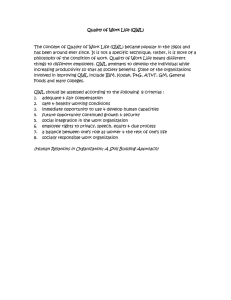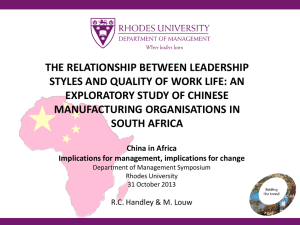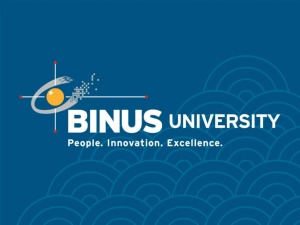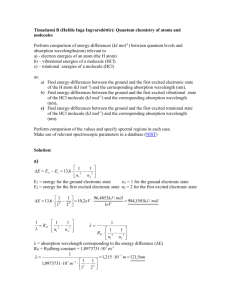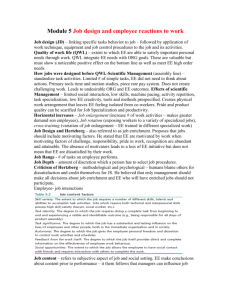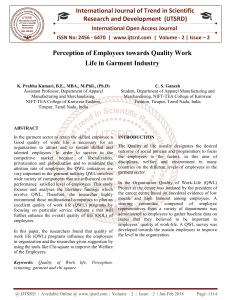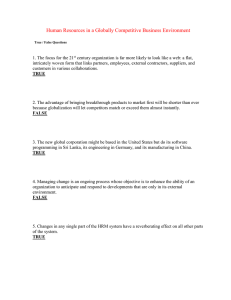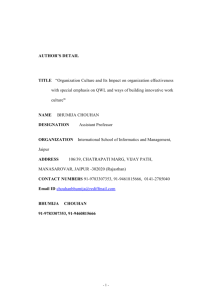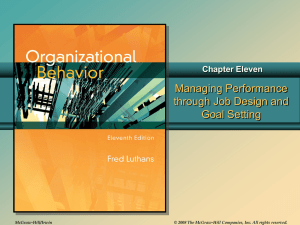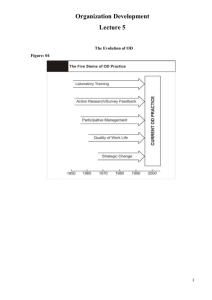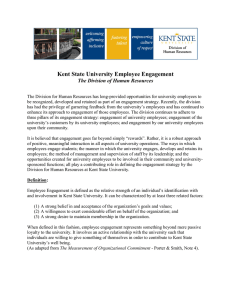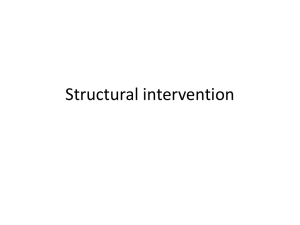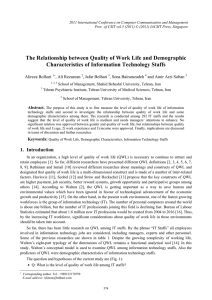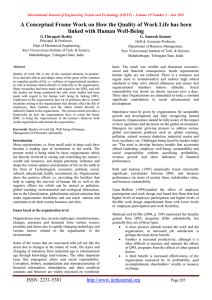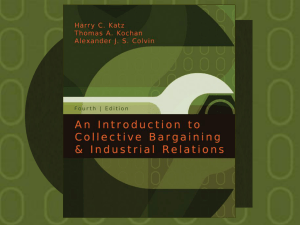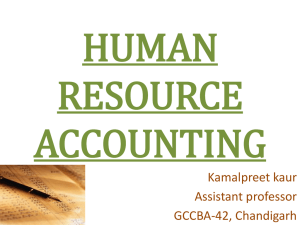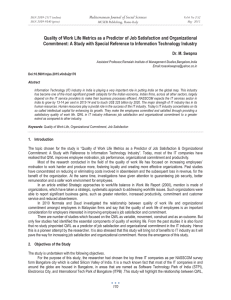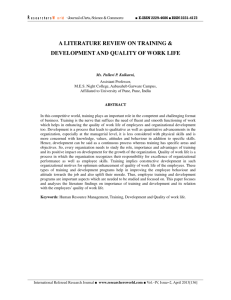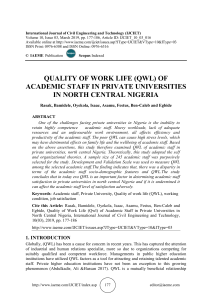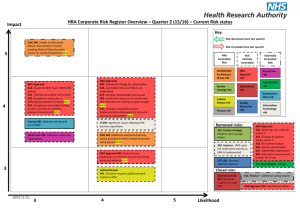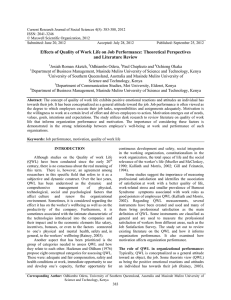Quality Work Life
advertisement
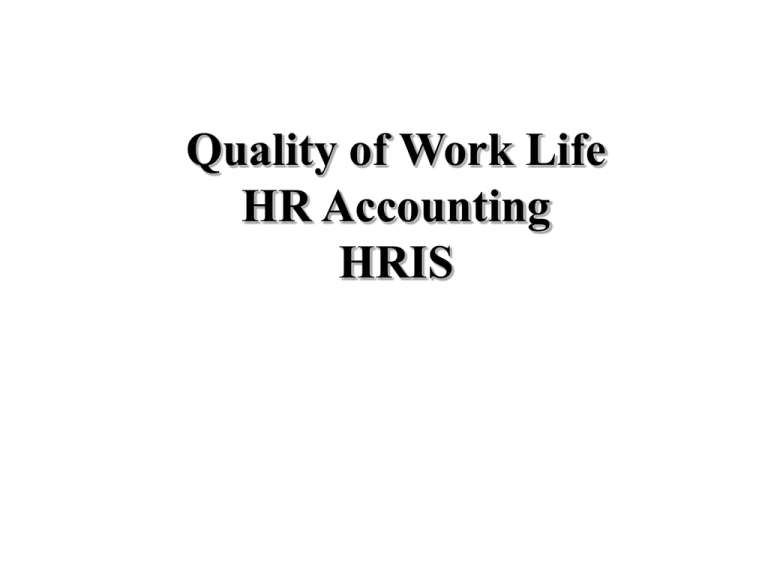
Quality of Work Life HR Accounting HRIS Quality of Work Life • Quality of Work Life (QWL) – was first introduced in 1972 during an international labour relations conference (Hian and Einstein, 1990). – QWL is defined as the favourable conditions and environments of a workplace that support and promote employee satisfaction by providing them with rewards, job security, and growth opportunities (Udai Pareek and T. Venkateshwara Rao). Quality of Work Life • Important work on QWL has been done by Dr. D.R. Saklani in the Indian context. • In his study he surveyed 192 managers and 102 non managers in both private and public sector industries and • Identified 13 QWL components on the basis of employees’ perception about the significance of each component. Components of QWL QWL COMPONENTS RANK ORDER Opportunity for continued growth 1 Most Important Opportunity to use and develop human capacity 2 Most Important Adequate and fair compensation 3 Most Important Reward and penalty system 4 Most Important Fringe benefits and welfare measures 5 Most Important Participation in decision making 6 Very Important Job security 7 Very Important Image of organization 8 Important Work and total life space 9 Important Work load and job stress 10 Important Equity, justice and grievance handling 11 Important Human relations and social aspect of work life 12 Important Physical work environment 13 Moderate Important D.R. Saklani: Quality of Work Life in the Indian Context: An Empirical Investigation QWL and Organizational Efficiency • • • It encourages workers to participate with management in making decisions. It results in increasing organizational effectiveness, and improving worker satisfaction, commitment and performance (Nadler and Lawler, 1983). QWL leads to – improved employee satisfaction and fulfillment, – increased mutual trust, – improved employee-supervisor relationships, – reduced stress and improved health, – reduced counterproductive attitudes and behaviours, – increased job security, – reduced grievances, – better utilization of human resources, – deeper sense of worker responsibility, – reduced labour-management conflict, – increased productivity, – a strengthened position of companies in competitive markets. (Steers and Porter, 1983). Human Resource Accounting • Human Resource Accounting (HRA) is – the process of identifying and measuring data about human resources and communicating this information to interested parties (The American Accounting Association’s Committee , 1973). – the measurement and reporting of the cost and value of people in organizational resources (Flamholtz, 1971). Human Resource Accounting • HRA, thus, – not only involves measurement of all the costs/investments associated with the recruitment, placement, training and development of employees, but also – the quantification of the economic value of the people in an organisation. • HRA is – a management tool which is designed to assist senior management in understanding the long term cost and benefit implications of their HR decisions so that better business decisions can be taken. Purposes served by HRA • It furnishes cost/value information for making management decisions about acquiring, allocating, developing, and maintaining human resources in order to attain costeffectiveness; • It allows management personnel to monitor effectively the use of human resources; • It provides a sound and effective basis of human asset control, that is, whether the asset is appreciated, depleted or conserved; • It helps in the development of management principles by classifying the financial consequences of various practices Likert (1971). Measurements in HRA • The cost approach which – involves methods based on the costs incurred by the company, with regard to an employee. • The economic value approach which – includes methods based on the economic value of the human resources and their contribution to the company’s gains.
